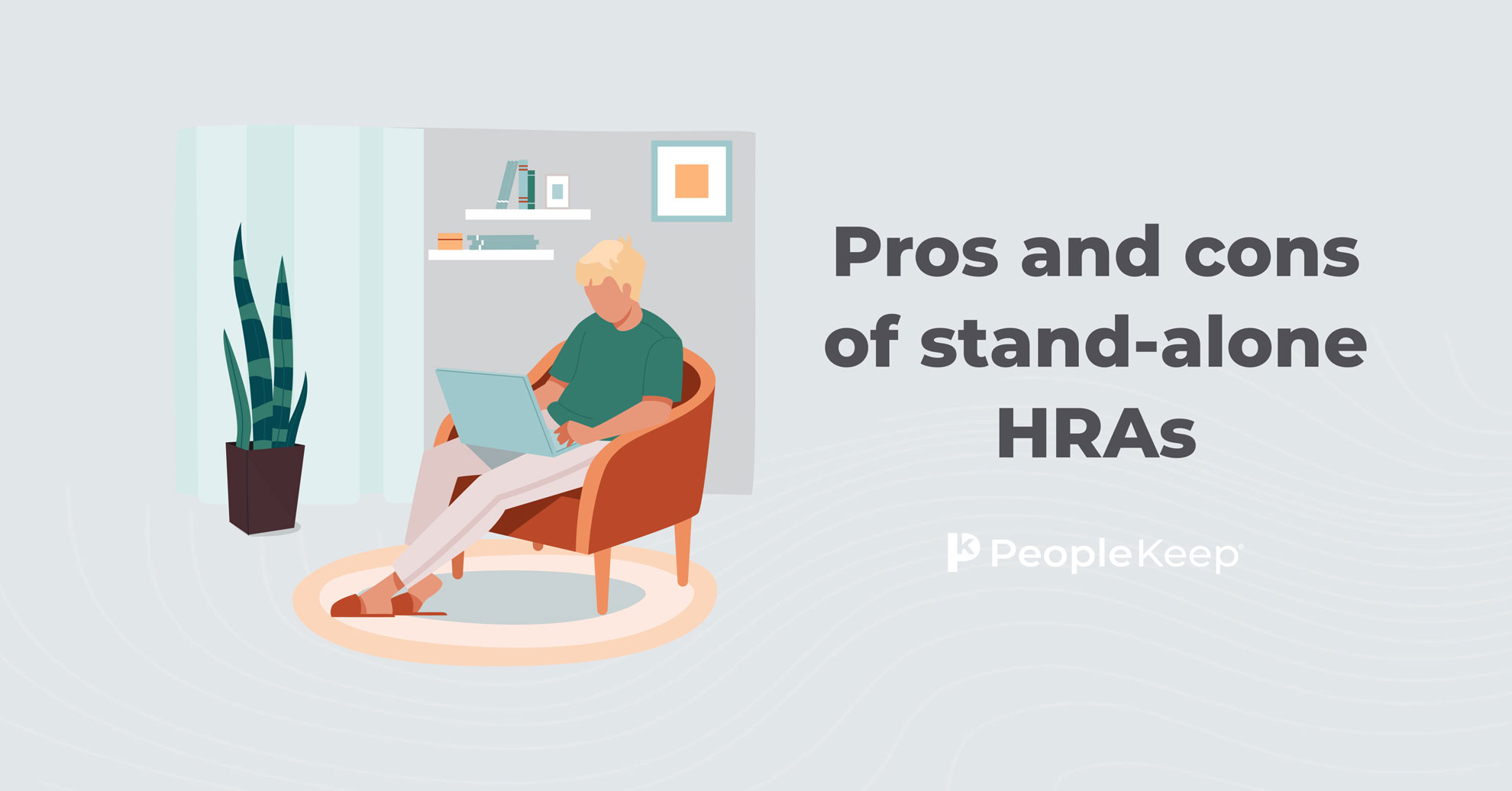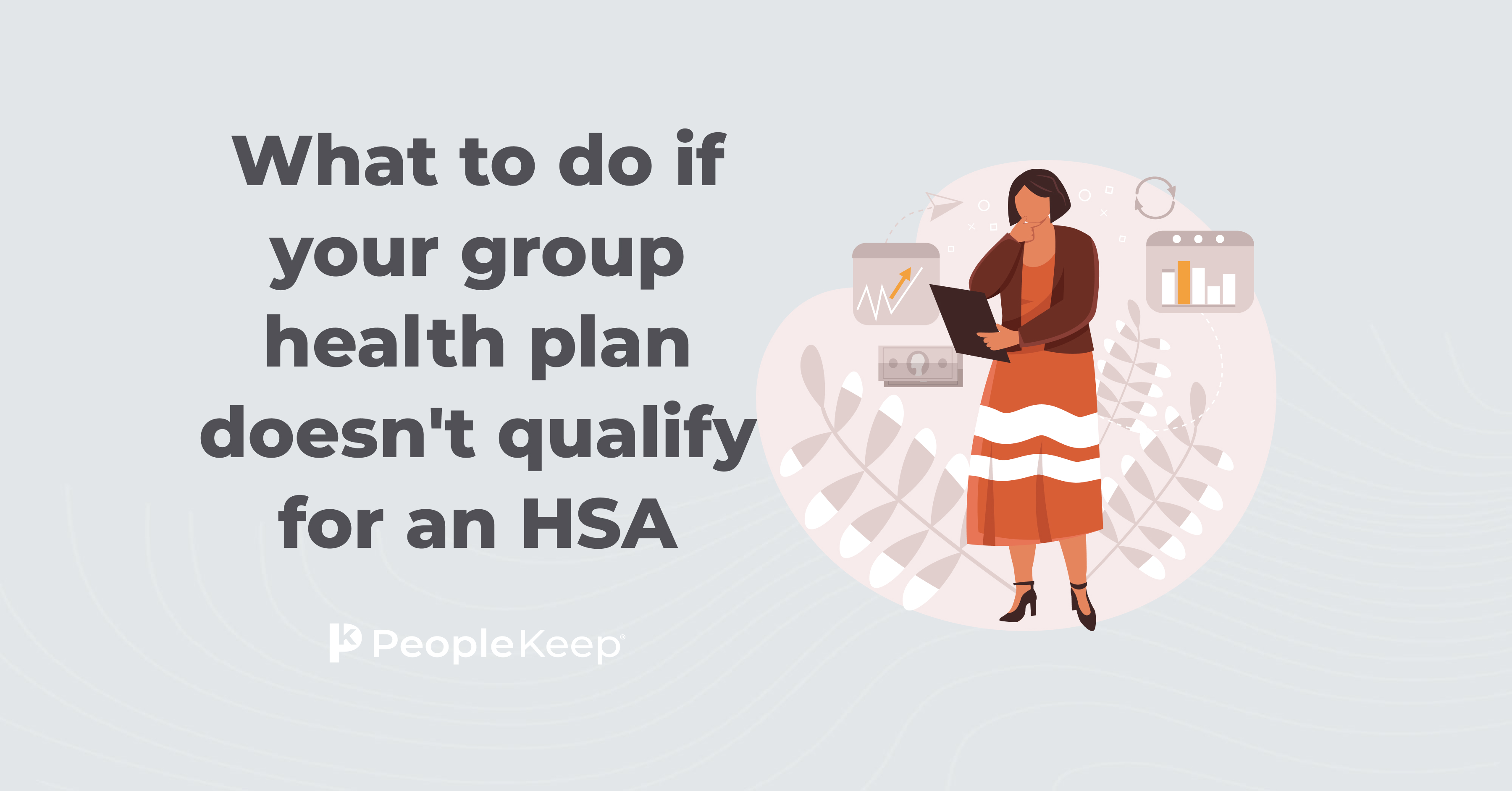Common types of health insurance plans
By Elizabeth Walker on November 10, 2025 at 8:00 AM
Whether you need individual health insurance for yourself or a group health plan for your employees, there are many plan options available. Knowing about various health insurance policies helps employees assess their options during the annual Open Enrollment Period. It also enables employers to select group policies that can cover a wide range of their employees’ healthcare needs. The more familiar you are with different health insurance plans, the more informed you’ll be when comparing and enrolling in coverage.
This article reviews the most common types of health plans to help you determine which one is right for you, your family, or your company.
In this blog post, you’ll learn:
- The key differences between the most common types of health insurance plans.
- The typical costs, coverage levels, and the pros and cons associated with each plan type.
- How alternative options like health reimbursement arrangements (HRAs) can give employers flexible, cost-effective ways to offer health benefits.
What are the main types of health insurance plans?
Health plans generally fall into two categories — individual coverage and employer-sponsored coverage. The primary difference is who chooses and pays for the policies. Essentially, individuals purchase their own plans, whereas employers offer coverage to their employees through group plans.
Here are more details:
- Individual health insurance plans. As the name suggests, individual consumers can buy this type of coverage for themselves or their families on the individual market, which includes the federal Marketplace, state-based exchanges, or private exchanges. These plans aren’t dependent on employment, making them ideal for those who are self-employed, between jobs, or whose employer doesn’t offer coverage. Unless they experience a qualifying life event mid-year, individuals can only enroll in or change their individual health plan during the annual Open Enrollment Period.
- Fully insured group health plans. Better known as traditional group health insurance, this is the most popular form of coverage. Group plans are employer-sponsored coverage, meaning the employer selects a group policy from an insurance company to offer to their employees and their dependents. The insurer manages the plan and assumes the financial risk of covering employees’ claims in exchange for the employer and enrolled employees paying a fixed monthly premium. However, coverage is often expensive, has participation requirements, and can have limited policy options or terms.
- Self-insured group health plans. While this is also employer-sponsored coverage, it differs from traditional group health insurance. Self-insured plans involve the employer designing and offering their own group health benefit to their employees, rather than paying a premium to an insurance carrier. However, the employer is responsible for paying their employees’ medical claims directly, which can make them financially risky and time-consuming to administer.
What types of health insurance plans are available?
Within each of the three main insurance options listed above, there are various policy types to choose from. Before choosing a health insurance plan for yourself, your family, or your employees, you must know how each type works and what benefits they typically cover.
Some popular health insurance policy options are:
- Preferred provider organization (PPO) plans
- Health maintenance organization (HMO) plans
- Point of service (POS) plans
- Exclusive provider organization (EPO) plans
- High deductible health plans (HDHPs)
- Health savings account (HSA)-qualified plans
- Indemnity plans
- Catastrophic health plans
The best health insurance policy for you depends on your specific medical needs, budget, preferred provider network, and the plan’s covered services. We'll cover each plan type in the following sections.
Preferred provider organization (PPO) plans
The preferred provider organization (PPO) plan is the most common type of health plan, particularly among group plans. According to KFF’s 2025 Employer Health Benefits Survey, 46% of individuals with an employer-sponsored plan have a PPO1. By contrast, only 13% of Marketplace enrollees were in PPO networks2.
PPO plans encourage participants to use a preferred provider network for healthcare services in exchange for discounted rates. These plans generally don’t require employees to select a primary care provider (PCP). Instead, they can visit any doctor within their larger network.
Employees must meet an annual deductible before their health insurer will cover their medical bills. Their plan may also require cost sharing, like a copayment or coinsurance, for certain items and services. PPOs even allow some out-of-network care, although it can result in higher out-of-pocket medical costs.
A PPO plan may be right for you or your employees if:
- You want to be able to choose any primary care doctor and healthcare facility within your insurance company's network.
- You want to have some coverage for out-of-network costs.
- You want the convenience of seeing a specialist without a referral from a PCP.
Some disadvantages of a PPO plan are:
- You’ll pay higher monthly premiums.
- The average annual premiums for employer-sponsored health insurance in 2025 were $9,325 for single coverage and $26,993 for family coverage. However, the average premiums were $9,818 for a self-only PPO plan and $28,272 for a family policy3.
- Your employees must meet an annual deductible.
- The average deductible for workers with a PPO plan was $1,337 in 20254.
- If you receive out-of-network care, you must file the claim with your health insurance company yourself. Completing claim forms can be tricky if you’re not used to it. It can also be time-consuming if you need frequent care from various medical providers.
Health maintenance organization (HMO) plans
Next up is the health maintenance organization (HMO) plan. These policies offer participants a wide range of medical services through a network of providers that contract exclusively with the HMO and agree to provide healthcare to its members. This is the most popular type of health plan on the ACA individual market2.
HMOs typically require employees to choose a primary care physician before receiving medical care. However, they tend to have lower out-of-pocket costs for covered services. Employees may only have a deductible after their coverage starts, and usually have low copay amounts.
With an HMO, employees must have a referral from their PCP to see a specialist. Additionally, most HMO plans only cover employees who go outside their network for emergency care.
An HMO plan may be right for you or your employees if:
- You want a plan with a lower premium and deductible.
- In 2025, the average annual premium for a self-only HMO plan was $9,229. For a family plan, the premium was $27,2773.
- You want a lower copay for doctor visits and prescription drug costs.
- You want a primary care provider to coordinate your care, manage your treatment, and make referrals for specialist visits.
Some disadvantages of an HMO plan are:
- A limited network of physicians can make it challenging for some individuals to receive necessary care.
- If you visit a specialist without a referral from your PCP, you must pay the entire cost of your medical bill yourself.
- While your HMO will cover some medical emergencies, it generally won’t cover everything. Your policy will outline acceptable medical emergencies in the plan details. If your emergency doesn’t meet the criteria, you must pay the bill yourself.
Point of service (POS) plans
A POS health policy combines the features of an HMO and a PPO plan. Participants can choose whether to receive in- or out-of-network care at each point of service. But, they may have to select a PCP from the plan's network providers. This is the least common type of plan on the ACA individual market, with only 4% of enrollees having one2.
POS plans typically have copays for office visits and prescription medications. They also have deductibles and coinsurance for other health services. Generally, PCP services, like routine or preventive care, aren't subject to the deductible.
Employees who receive services from their primary care doctor will have greater coverage. If they visit an out-of-network doctor, they may experience lower coverage and higher out-of-pocket expenses. They may also have to submit a claim for reimbursement.
A POS plan may be right for you or your employees if:
- You want greater flexibility when choosing physicians and other network providers.
- You want a primary care physician to help you coordinate your medical care.
- You want a plan with a lower monthly premium than a PPO.
- You want the ability to see out-of-network doctors, even if it comes at a higher cost.
- You want a better selection of in-network providers than HMO plans.
Some disadvantages of a POS plan are:
- Monthly premiums cost as much or more than EPOs and HMOs.
- Seeing an out-of-network provider can result in paying your medical bills upfront at a higher cost.
- You have to submit medical claims to your insurance company for reimbursement.
- They require referrals to see a network specialist.
Exclusive provider organization (EPO) plans
An exclusive provider organization (EPO) policy combines some aspects of an HMO and a PPO. Like HMOs, members must receive medical services and items from in-network healthcare providers. EPOs are the second most popular type of network on the ACA individual market2.
An EPO plan offers a good mix of affordability and flexibility. For example, these plans don’t require members to choose a PCP. Participants can see a specialist without a referral. EPOs typically have a set deductible and coinsurance amount. But the copay amounts are generally small.
An EPO plan may be right for you or your employees if:
- You like the balance of having fewer provider choices in exchange for lower premiums.
- You believe that a smaller network can provide more streamlined and coordinated healthcare.
- You want to avoid choosing a primary care doctor or getting a referral to see a specialist.
- You can pay higher costs for unplanned medical events.
A few downsides of EPOs are:
- Depending on your plan and location, you may have limited options for in-network providers.
- Some EPO plans can have high out-of-pocket costs due to their deductibles and coinsurance requirements.
- EPOs only cover out-of-network care for emergencies. You must pay the entire bill if you receive ineligible out-of-network care.
- EPO plans typically serve only specific regions or locations. So they may not be appropriate for every employee’s needs.
High deductible health plans (HDHPs)
You may also have a choice between a low or high deductible health plan. Like the name suggests, HDHPs have higher deductibles than other plans.
PPOs, HMOs, POSs, and EPOs can be HDHPs if their annual deductibles and out-of-pocket maximums meet the annual IRS thresholds.
The 2026 thresholds for HDHPs are5:
|
Self-only coverage |
Family coverage |
|
|
Minimum deductible |
$1,700 |
$3,400 |
|
Out-of-pocket maximum |
$8,500 |
$17,000 |
Because of their higher deductibles, HDHPs have lower monthly premiums. This makes them a great option for those looking to save money while having coverage for medical emergencies.
Health savings account-qualified plans
A health savings account (HSA) is a tax-advantaged savings account that individuals can use to save and pay for qualifying medical expenses outlined in IRS Publication 5026. An employer can offer an HSA to their employees, or an individual can open one on their own. However, these accounts only work if you have an HSA-qualified high deductible health plan (HDHP). Starting in 2026, bronze individual health plans on the public exchanges will count as HSA-qualified HDHPs.
Both employees and employers can contribute to an HSA up to the maximum annual limit, which is $4,400 for individuals and $8,750 for families in 2026. Unused HSA funds roll over each year and earn interest tax-free.
Lastly, HSAs are employee-owned. This means that once an employee leaves your company, the account and all its money go with them. All contributions will stay in the HSA until the account holder withdraws them.
An HSA-qualified plan may be right for you or your employees if:
- You want to offer an HDHP to save on premium costs.
- In 2025, the average annual premiums for HSA-qualified HDHPs were $8,620 for self-only coverage and $25,379 for family coverage7.
- You want to provide employees with financial assistance to pay for their current and future medical expenses.
- You like the appeal of a portable account that employees can keep even if they leave your company.
- You want to make tax-free contributions to an account that will roll over from year to year.
Some disadvantages of an HSA-qualified plan are:
- You or your employees will have a high deductible and out-of-pocket maximum.
- The average annual deductible for a self-only HSA-qualified HDHP was $2,578. The average aggregate deductible for family coverage was $4,9328.
- If you’re younger than 65 and withdraw HSA funds to pay for non-healthcare items, you must pay a 20% penalty.
- HSAs have an annual maximum contribution limit that employees and employers must follow.
- Employers must pre-fund HSAs upfront, regardless of whether the employee will spend the money.
Indemnity plans
The health insurance industry refers to indemnity plans as “fee-for-service plans.” With these policies, an insurance company pays a predetermined percentage of the typical charge (or the average fee within a specific location) for a medical service. Then, the plan participant pays the rest.
Indemnity plans have no provider network limitations, meaning patients can choose their preferred doctors and hospitals. However, providers determine their fees for health services. Depending on how much the provider charges, members may receive a large and unexpected medical bill.
Lastly, indemnity plans are a type of supplemental health coverage. This means the Affordable Care Act (ACA) doesn’t consider them minimum essential coverage (MEC).
An indemnity plan may be right for you or your employees if:
- You don't want to commit to one specific primary care physician or facility.
- You want flexibility when choosing which doctors and healthcare centers to visit.
- You want to be able to see a specialist without a referral from a primary care provider.
Some disadvantages of an indemnity plan are:
- Indemnity plans tend to be one of the most expensive. Medical costs vary widely depending on location, age, and the benefits you want to include.
- Predetermined payouts for healthcare services may be less than the actual costs. This could leave patients with unpredictable medical bills.
- Indemnity plans may limit the number of times you can access a particular service annually. They can also restrict the total amount of benefits you can receive in a year. So, these plans may not provide enough coverage if you have a severe health condition.
- Because indemnity plans aren’t ACA policies, your insurer can decline to enroll you in one if you have a pre-existing condition. If they let you enroll, they can choose not to cover treatment for your pre-existing illness.
- Indemnity plans aren’t a substitute for qualified health plans with MEC.
Catastrophic health plans
A catastrophic health plan provides individuals and families with coverage for serious and costly medical events. It's typically best for people who are generally healthy and don’t need frequent healthcare.
These plans have high deductibles and maximum out-of-pocket limits. Therefore, participants must pay a large amount of money before the insurance coverage kicks in. However, once you meet the deductible, the plan usually covers the total cost of essential health benefits.
Catastrophic policies have eligibility requirements. They’re typically available to people younger than 30 because they're less likely to have chronic conditions. Those who qualify for a financial hardship or affordability exemption may also enroll in this plan. You can also qualify if only one or no insurers are available on the individual health insurance market in your area.
A catastrophic plan may be right for you or your employees if:
- You want lower monthly premium payments.
- You meet the age, income, or hardship eligibility requirements.
- You don’t use many healthcare services, but you want coverage in case of an emergency.
- You typically only access routine or preventive care.
- You want to open an HSA.
- Due to the recent One Big Beautiful Bill Act, the federal government now considers all catastrophic individual health insurance plans to be HSA-qualified coverage.
Some downsides to catastrophic health plans are:
- They don’t work with HSAs because they aren’t HSA-qualified.
- They have high annual deductibles and out-of-pocket maximums, also known as a catastrophic limit.
- For the 2026 plan year, catastrophic plans will have an annual deductible of $10,600 for self-only plans and $21,200 for family coverage9.
- This type of plan won’t provide enough coverage for people with chronic diseases.
What is an alternative health benefit option to traditional health insurance?
Employers aren’t limited to traditional group health coverage. Suppose you want to avoid the premium rate hikes, minimum participation limits, and carrier negotiations that come with group plans. In that case, you should consider offering your employees a stand-alone health reimbursement arrangement (HRA).
HRAs are IRS-approved, employer-funded health benefits that allow you to reimburse your employees for their qualifying medical expenses, including individual health insurance premiums and out-of-pocket costs, on a tax-free basis.
With an HRA, you set a monthly allowance that works for your company’s benefits budget. Instead of enrolling in a one-size-fits-all group plan, your employees buy individual health insurance and other eligible medical services and items. Once employees make an approved purchase, you reimburse them tax-free up to their allowance amount. Unused HRA funds stay with you at the end of the plan year or if an employee leaves your company.
The following are three types of HRAs that you can offer with PeopleKeep:
- The individual coverage HRA (ICHRA) is for organizations of all sizes. The ICHRA has no contribution limitations, and you can use factors such as family status, age, or employee classes to vary eligibility and allowance amounts. This type of HRA can also satisfy the ACA's employer mandate for applicable large employers (ALEs). To do this, your employees must have qualified individual health insurance, and your ICHRA allowance must be affordable.
- The qualified small employer HRA (QSEHRA) is specifically for organizations with fewer than 50 full-time equivalent employees (FTEs) that don’t offer a traditional group health insurance plan or ancillary coverage. Employers must offer the QSEHRA to all full-time workers; however, they can allow part-time employees to join the benefit, as long as they receive the same allowance amount. Employees are eligible to participate in the QSEHRA if they have a health plan that provides MEC.
- The group coverage HRA (GCHRA) is for employers of any size that offer group health insurance. Like the ICHRA, the GCHRA has no minimum or maximum contribution limits and allows for customization using employee classes. Employees can use their GCHRA funds to pay for qualified medical costs that their group plan doesn’t fully cover. However, premiums are ineligible for reimbursement. Only employees enrolled in your employer-sponsored health plan can participate in the benefit.
Due to their flexibility, offering an HRA instead of group health insurance is a surefire way for employers of all sizes, locations, and budgets to attract and retain talented workers.
Conclusion
No matter where you live, what type of business you run, or your employees’ medical needs, you have comprehensive coverage options. Reviewing your available health insurance plans will help you make the right choice for your family or organization during Open Enrollment.
If you're an employer looking to provide personalized health benefits, PeopleKeep by Remodel Health can help. Our HRA administration software makes it easy for business owners of all sizes to set up and manage a cost-effective QSEHRA, ICHRA, or GCHRA. Schedule a call with an HRA specialist to learn how we can help you improve your benefits package!
This blog article was originally published on July 29, 2013. It was last updated on November 10, 2025.
1. 2025 Employer Health Benefits Survey - Market shares of health plans
2. KFF - How Narrow or Broad Are ACA Marketplace Physician Networks
3. 2025 Employer Health Benefits Survey - Health insurance premiums and worker contributions
4. 2025 Employer Health Benefits Survey - Employee cost sharing
5. IRS Publication Rev. Proc. 2025-19
7. 2025 Employer Benefits Survey - Cost of health insurance
8. 2025 Employer Benefits Survey - High deductible health plans with savings option
Check out more resources
See these related articles

Pros and cons of stand-alone HRAs
Stand-alone HRAs can offer flexibility and control over healthcare expenses, allowing employers to customize plans to meet their employees' needs.

What to do if your group health plan doesn't qualify for an HSA
If your group health plan isn’t HSA-qualified, explore HSA alternatives that still offer tax advantages and help employees manage healthcare costs.

Choosing between a low or high deductible health plan
In this article, we’ll discuss the differences between an HDHP and an LDHP and which type of plan will work best for you based on your specific situation.



